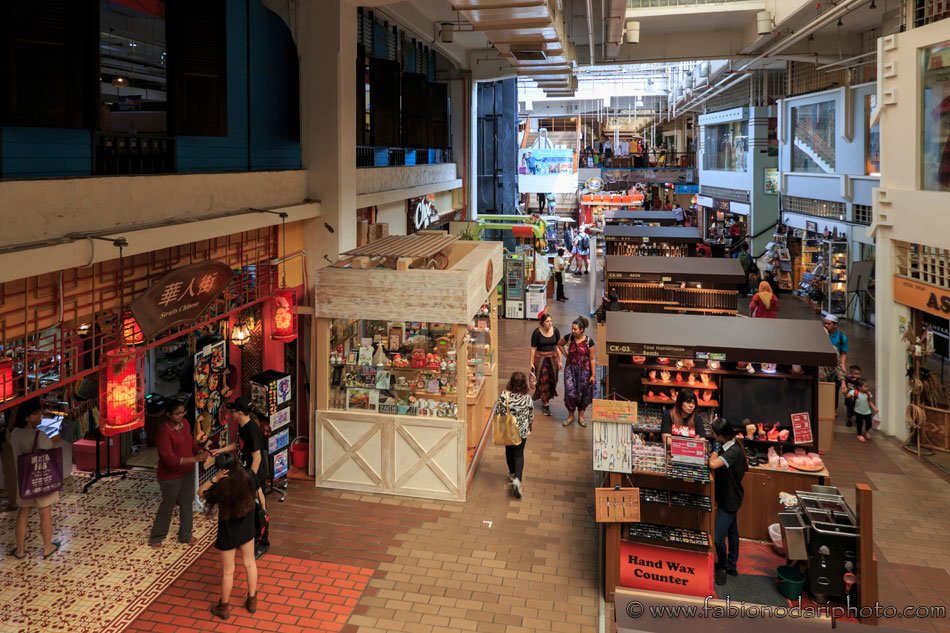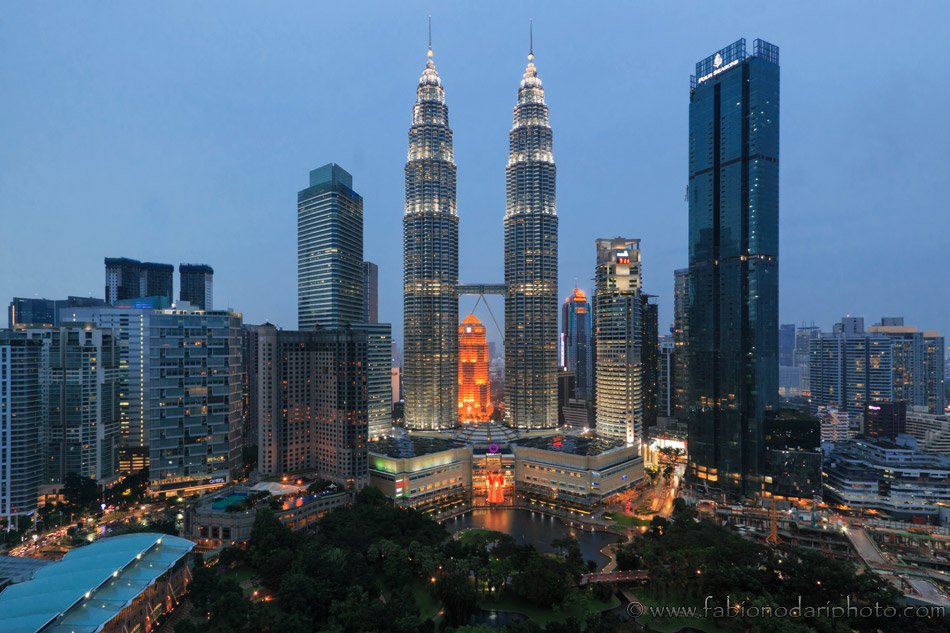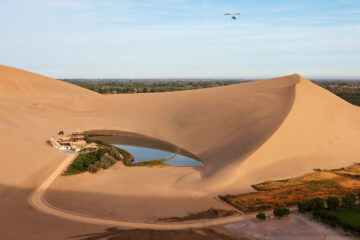Find out what you can do and see in three days in Kuala Lumpur, the capital of Malaysia.

There are some cities that can’t wait to visit, only to be disappointed when we finally get there. Others, on the other hand, perhaps because we don’t know much about them, are much better than we expected. Kuala Lumpur is definitely one of the latter.
Although I have often heard good things about the capital of Malaysia, I honestly didn’t expect much (especially after seeing many Asian cities). But it turned out to be a nice surprise: friendly people, a green city, great food, and special architecture due to the great ethnic diversity of its population.
Kuala Lumpur is a city with three souls where Muslims, Indians, and Chinese live together without many problems.
Three days may be enough to visit Kuala Lumpur, but if you have more time, you can explore some less crowded places and maybe take a day trip to Malacca or elsewhere.
How to get to Kuala Lumpur and how to get around

You can find discounted flights to Malaysia using a search engine such as Momondo. Another way to get to Kuala Lumpur is by bus from Singapore.
Once you land at one of the two airport terminals in Kuala Lumpur (the airport is about an hour’s distance from the city), you have three options to reach your hotel.
- The first and fastest way is using the KLIA Ekspres, the train that takes you to Sentral Station in the center of Kuala Lumpur. However, this is not the cheapest option. Also, once at the station, you must take a taxi to reach the hotel (some sites offer KLIA Ekspres tickets with a taxi ride included).
- The second option is by taxi. Taxis at the airport work differently than in other places. You will first have to purchase a ticket in the appropriate kiosks specifying the destination, and you’ll have to pay for it there. Then you can search for the taxi and show the receipt to the driver. You won’t have to pay anything to him. I think it’s a great way to avoid scams by taxi drivers at the airport, who often take advantage of tourists and ask them for very high prices (hello Vietnam?!).
 The third and cheapest option is to take the bus that, for a few Ringgit, will take you to the Sentral station. Once there you can take the taxi or the metro to your hotel. To take the bus (available in both Terminal 1 and Terminal 2), you need to search for the ticket office you see in the picture.
The third and cheapest option is to take the bus that, for a few Ringgit, will take you to the Sentral station. Once there you can take the taxi or the metro to your hotel. To take the bus (available in both Terminal 1 and Terminal 2), you need to search for the ticket office you see in the picture.
One thing I didn’t quite like about KL is the way the subway works. Different companies manage the metro, and the various lines are poorly connected. In addition, for some lines, you must wait long before the train arrives. For example, to take the train to the Batu Caves, I had to wait for about an hour and a half, which is strange if you think it is perhaps the most popular tourist destination in KL. The monorail is very old, and when I visited Kuala Lumpur, it only had two cars, really few for a city of about 8 million people.
Where to stay in Kuala Lumpur


Like most Asian cities, hotels are relatively cheap, especially compared to Europe. During my trip to Kuala Lumpur, I stayed at the Furama Bukit Bintang, an excellent 4-star hotel in the center that was surprisingly inexpensive. It’s also quite close to the subway: less than 5 minutes on foot, something important when visiting tropical countries and the weather is hot and humid all year round.
Another very interesting aspect of this hotel is the possibility to access a lounge room for a few guests where you can have breakfast with more privacy. There is also an outdoor swimming pool and a gym. I truly recommend staying at this hotel.
Things to do and to see in Kuala Lumpur in 3 days
Here are some of the main attractions of the capital of Malaysia that you can visit in 3 days.
Batu Caves

Batu Caves, located just outside Kuala Lumpur, is a beautiful complex of limestone caves and cave temples that symbolize spiritual and natural beauty. The site is dominated by a massive golden statue of Lord Murugan at the entrance, welcoming visitors to ascend the steep flight of stairs leading into the caverns.
As you climb, the vibrant hues of the 272 steps are contrasted against the striking limestone formations. The main cave, the Cathedral Cave, is adorned with Hindu shrines and statues, creating a sacred atmosphere. Batu Caves is a significant religious site and a haven for nature enthusiasts, offering panoramic views of the surrounding landscape from the cave’s entrance. The annual Thaipusam festival, marked by elaborate processions and rituals, adds to the cultural richness of this remarkable destination.
Batu Caves can be reached by train from the Sentral station. Check out the timetables because you might have to wait up to one hour before getting on to the train.
Central Market

Central Market is a vibrant cultural hub where you can explore Malaysian arts, crafts, and flavors. Established by the British in 1888, this historic market showcases a fusion of tradition and modernity. From local handicrafts to diverse culinary delights, Central Market is a one-stop destination for an immersive experience in Malaysian culture. The colorful stalls and lively atmosphere make it a must-visit spot for tourists and locals alike.
The market is inside a building and therefore has air conditioning: if it’s too hot outside, take a trip around the Central Market to rest a bit.
Lebuh Ampang – Little India

Lebuh Ampang, also known as Little India, is a lively and bustling neighborhood in Kuala Lumpur that offers a vibrant slice of Indian culture in the heart of Malaysia. The streets are adorned with colorful shops and intricate designs, selling everything from spices and textiles to traditional Indian garments.
It was established by the “Nattukottai Chettiar,” a community in southern India. The street is not very long, but it’s close to the Central Market and definitely worth a visit.
Merdeka Square and Sultan Abdul Samad Building

At the heart of Kuala Lumpur, Merdeka Square is a historic landmark and symbol of Malaysia’s independence. The grand Sultan Abdul Samad Building dominates the square. This stunning architectural masterpiece once housed British colonial administrative offices and is now an enduring symbol of the nation’s sovereignty.
Its Moorish-inspired design makes the building an iconic backdrop to various national events and celebrations. Merdeka Square, surrounded by other significant structures, lush greenery, and the Malaysian flag, is not just a historical site but a lively civic space where locals and visitors come together to appreciate the nation’s past and present.
Petaling Street – China Town

Petaling Street, commonly known as Chinatown, is a vibrant and bustling district in the heart of Kuala Lumpur. This lively area is renowned for its lively street markets, where you can find a plethora of stalls offering everything from traditional Chinese goods and crafts to mouthwatering street food.
From haggling for souvenirs to indulging in delicious local delicacies, Petaling Street captures the dynamic spirit of Kuala Lumpur’s Chinese community. Whether you’re seeking authentic cuisine, unique trinkets, or a taste of the local culture, Chinatown is a must-visit destination in the heart of the Malaysian capital.
Sri Mahamariamman Temple

Sri Mahamariamman Temple, nestled in the heart of Kuala Lumpur’s Chinatown, stands as the oldest Hindu temple in the city, dating back to 1873. Dedicated to the Hindu goddess Mariamman, the temple’s stunning facade is adorned with colorful sculptures and ornate decorations.
As you enter, you’ll be greeted by a sense of tranquility amidst the vibrant surroundings. The intricate details, lively ceremonies, and the aromatic scent of incense make Sri Mahamariamman Temple a captivating cultural gem, offering visitors a glimpse into the spiritual heritage of Malaysia.
Sultan Abdul Samad Jamek Mosque

Sultan Abdul Samad Jamek Mosque, situated at the confluence of the Klang and Gombak Rivers, is a magnificent symbol of Islamic architecture. Completed in 1909, the mosque’s design boasts Mughal, Moorish, and Indo-Saracenic influences, creating a stunning blend of intricate details and graceful domes.
Surrounded by lush gardens and featuring a grand central prayer hall, the mosque invites worshippers and visitors alike to admire its serene beauty. The mosque’s strategic location near Merdeka Square adds to its historical significance, making it a place of worship and a cultural landmark within the bustling heart of Kuala Lumpur.
Rivers Klang and Gombak

The confluence point of the Klang and Gombak Rivers symbolizes the city’s origin. The Gombak River, with its clear waters, and the Klang River, flowing from the northeast, blend into the urban landscape. You will find historical landmarks, lush greenery, and vibrant markets along their banks. These rivers contribute to the city’s aesthetics and played a crucial role in the early development and trade of Kuala Lumpur. Today, they stand as vital arteries, connecting the past with the present in the dynamic tapestry of Malaysia’s capital.
This place is also located a few minutes from the Central Market.
Berjaya Times Square

Berjaya Times Square is a colossal shopping and entertainment complex, one of the city’s iconic landmarks. With its twin towers and expansive mall, it offers a diverse range of retail outlets, from international brands to local favorites.
The mall’s vibrant atmosphere, complete with an indoor theme park and dining options, makes it a popular destination for locals and tourists.
Watching the sunset over the Petronas Towers from the Sky Bar – Traders Hotel

Often, the best view of a city is not from the top of its skyscrapers but from a roof-top bar. This is also true in the case of Kuala Lumpur. I strongly suggest you book a table in the best roof-top bar in KL: the Sky Bar at the top of the Traders Hotels, directly opposite the Petronas Towers.

Inside the bar, there is a swimming pool. Since it is a popular destination, I recommend booking your table a few days before. Unfortunately, tripods are not allowed, and the waiters constantly check if people use them. Keep it in mind.
Titiwangsa Lake Garden (Taman Tasik Titiwangsa)

Titiwangsa Lake Garden, or Taman Tasik Titiwangsa in Malay, is a tranquil oasis that provides a peaceful escape from the urban bustle. Nestled around Titiwangsa Lake, the park offers lush greenery, jogging paths, and scenic views.
You can enjoy recreational activities like paddle boating, fishing, or simply strolling along the lakeside promenade. The park has various attractions, including the Titiwangsa Sports Complex and the Kuala Lumpur Library.
Eat as much as you can

Malaysia is famous for its excellent street food. The mix of Indians, Muslims, and Chinese people has created an inexhaustible variety of dishes and flavors that makes Malaysia, especially Kuala Lumpur, a unique place worldwide. Don’t be afraid to try strange foods: you’ll love Malaysian street food!
Here are more pictures I took on my trip. You can add a stop-over to Singapore if you plan to visit Malaysia. Here you can find suggestions about what to see and do in this beautiful city.


